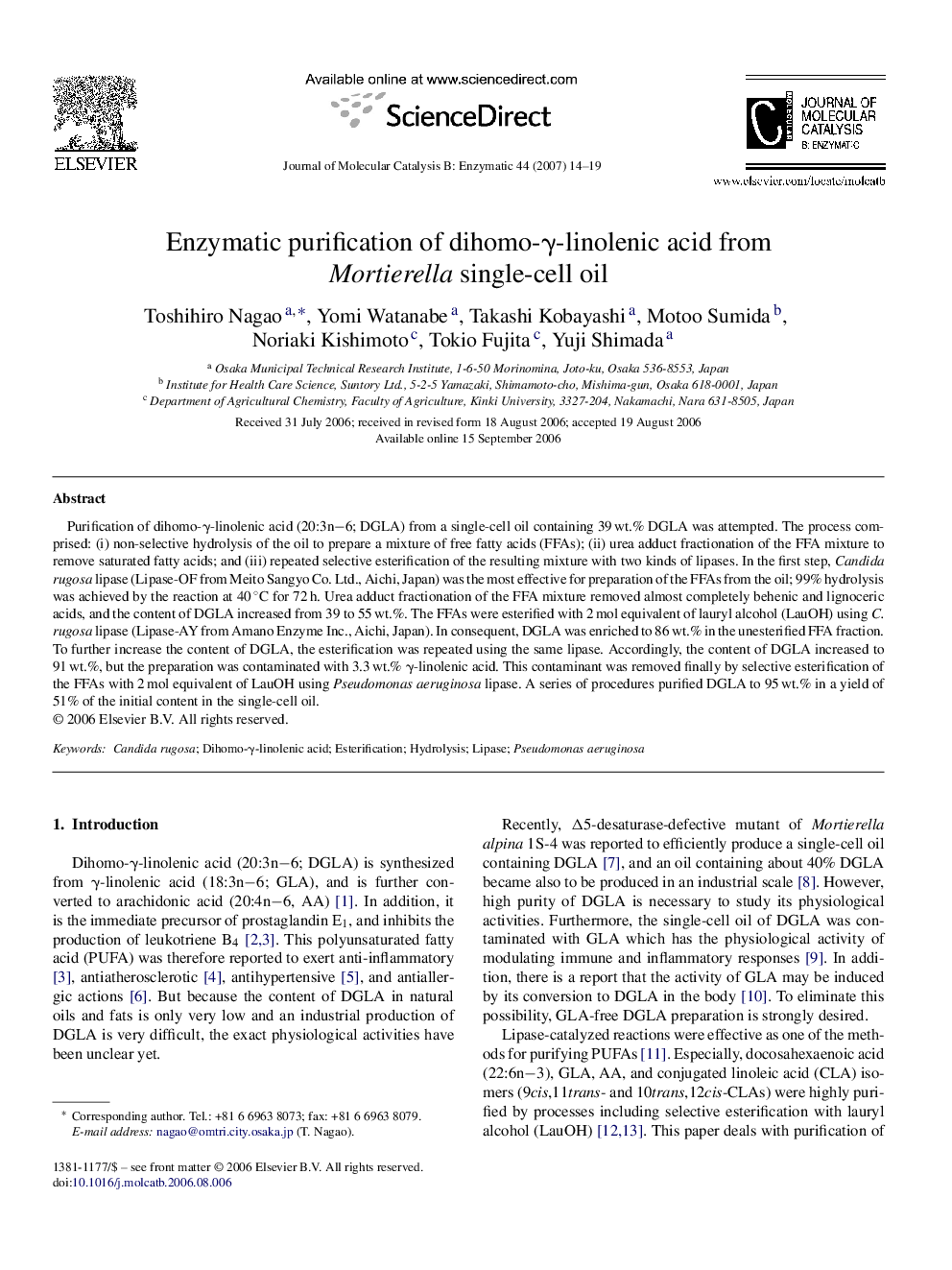| کد مقاله | کد نشریه | سال انتشار | مقاله انگلیسی | نسخه تمام متن |
|---|---|---|---|---|
| 71204 | 48887 | 2007 | 6 صفحه PDF | دانلود رایگان |

Purification of dihomo-γ-linolenic acid (20:3n−6; DGLA) from a single-cell oil containing 39 wt.% DGLA was attempted. The process comprised: (i) non-selective hydrolysis of the oil to prepare a mixture of free fatty acids (FFAs); (ii) urea adduct fractionation of the FFA mixture to remove saturated fatty acids; and (iii) repeated selective esterification of the resulting mixture with two kinds of lipases. In the first step, Candida rugosa lipase (Lipase-OF from Meito Sangyo Co. Ltd., Aichi, Japan) was the most effective for preparation of the FFAs from the oil; 99% hydrolysis was achieved by the reaction at 40 °C for 72 h. Urea adduct fractionation of the FFA mixture removed almost completely behenic and lignoceric acids, and the content of DGLA increased from 39 to 55 wt.%. The FFAs were esterified with 2 mol equivalent of lauryl alcohol (LauOH) using C. rugosa lipase (Lipase-AY from Amano Enzyme Inc., Aichi, Japan). In consequent, DGLA was enriched to 86 wt.% in the unesterified FFA fraction. To further increase the content of DGLA, the esterification was repeated using the same lipase. Accordingly, the content of DGLA increased to 91 wt.%, but the preparation was contaminated with 3.3 wt.% γ-linolenic acid. This contaminant was removed finally by selective esterification of the FFAs with 2 mol equivalent of LauOH using Pseudomonas aeruginosa lipase. A series of procedures purified DGLA to 95 wt.% in a yield of 51% of the initial content in the single-cell oil.
Journal: Journal of Molecular Catalysis B: Enzymatic - Volume 44, Issue 1, 2 January 2007, Pages 14–19